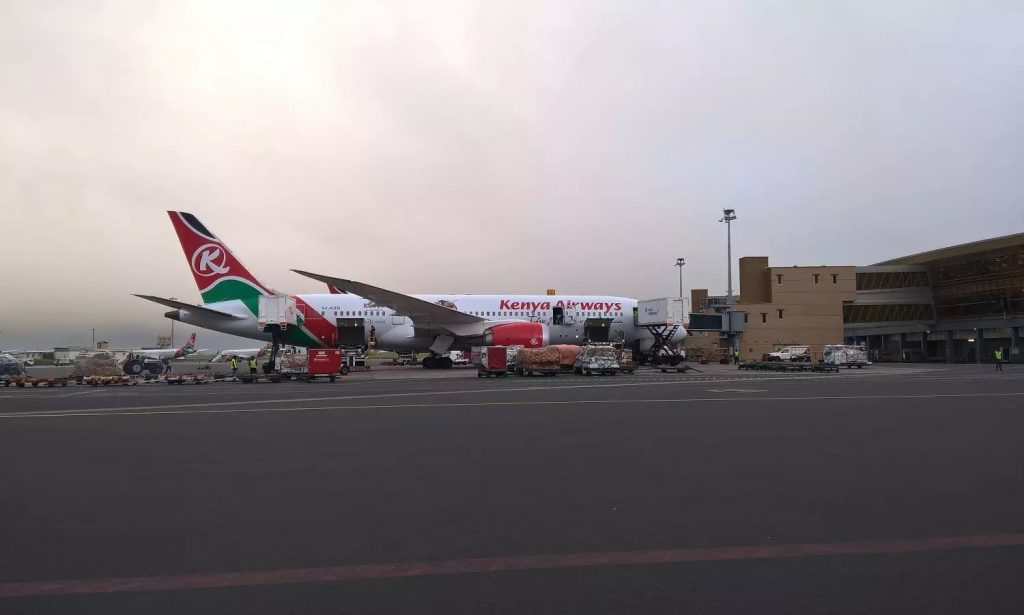
Kenya’s Jomo Kenyatta International Airport (JKIA) in Nairobi, a vital hub for East Africa, is set to undergo a major transformation. The Kenya Airports Authority (KAA) has received a significant investment proposal from Adani Airport Holdings (AAHL) to upgrade and expand the airport’s infrastructure. This proposal, under the Public Private Partnerships Act 2021, includes the construction of a new passenger terminal, a second runway, and refurbishment of existing facilities. Such enhancements are critical to accommodate the projected increase in passenger traffic and cargo volume, aligning with Kenya’s Vision 2030 development plan. This investment aims to position JKIA as a premier regional hub for trade, tourism, and commerce, potentially boosting Kenya’s GDP and further integrating the country into the global economy.
According to the official statement released by Henry Ogoye, Acting MD and CEO, KAA. “The proposal will be subjected to technical, financial and legal reviews alongside requisite due processes in compliance with the Public Private Partnerships Act 2021. The project agreement will be preceded by stakeholder engagement, the national treasury approval, the Attorney General clearance and the cabinet approval.”
Ogoye assured, “No jobs are at risk. The expanded facility will create additional business opportunities and attendant benefits.” Adani’s investment marks a significant expansion of its footprint in Africa, following its recent acquisition of a majority stake in Tanzania International Container Terminal Services (TICTS).
Projections indicate that by 2055, JKIA will cater to 33 million passengers and handle a million tonnes of cargo, a significant increase from the approximate 8 million passengers and 0.5 million tonnes of cargo in 2023. This highlights the necessity for improved infrastructure, mainly the construction of a second runway at the Nairobi airport.
Adani Airport Holdings Investment
AAHL has put forward a substantial plan in a “privately initiated proposal (PIP)” submitted to KAA to enhance JKIA. The PIP is to develop and expand JKIA through the Build, Operate and Transfer (BOT) model of Public Private Partnership (PPP) in line with the Public Private Partnerships Act 2021. According to sources, the proposed project as elaborated in the PIP will address major infrastructure gaps in Kenya in line with the Kenyan government’s development plan set out in Vision 2030. The current infrastructure is approaching saturation and poses limitations on accommodating growth in passenger numbers and cargo volumes. However, AAHL’s proposal involves building a new Passenger Terminal Building (PTB) and renovating existing PTBs. These improvements are meant to handle the expected increase in passenger capacity and provide facilities that will enhance the overall travel experience for passengers. If the proposal is accepted, the Indian airport holdings company will also start improving the airside pavement, including adding new taxiways and rapid exits and constructing a second runway if necessary. Additionally, the company will oversee the development and operation of facilities such as hotels, offices, and convention centres.
Economic Impact
The proposed project, financed by AAHL, will address major infrastructural gaps in Kenya and align with the country’s economic development plan. AAHL aims to position Kenya as a regional hub for trade, tourism, and commerce. Integrating the airport’s development with the country’s overall economic goals positions Kenya to leverage the airport’s potential as an economic catalyst, fostering overall prosperity and growth. Numerous studies show that the aviation sector significantly contributes to any country’s GDP, and Kenya is no exception. With direct and indirect impacts totaling around $3.2 billion, the aviation sector significantly contributes to Kenya’s GDP, including close to a billion directly, $0.6 billion from supply-chain activities, and $0.2 billion from employee and stakeholder spending.
Kenya is well-positioned to capitalize on this growth, as the entire East African transport sector is witnessing significant growth fueled by increased import and export of cargo, passenger numbers, liberalization of air transport regulations, and investments in airport infrastructure. Initiatives like the Single African Air Transport Market (SAATM), driven by the African Union’s Agenda 2063, aim to create a harmonized air transport market across the continent, promoting the liberalization of civil aviation and further growth in the East African air transport industry. JKIA has held an outstanding position in cargo handling, ranking as the second fastest-growing airport globally in 2018, handling 342,579 metric tonnes of cargo. Kenya’s airports handle more than half of the region’s cargo and accounts for around 36% of passenger movements in East Africa in 2022. With multinational companies like General Electric, Visa, IBM, Intel, and Google having their regional headquarters in Nairobi, Kenya serves as East Africa’s diplomatic and business center.
